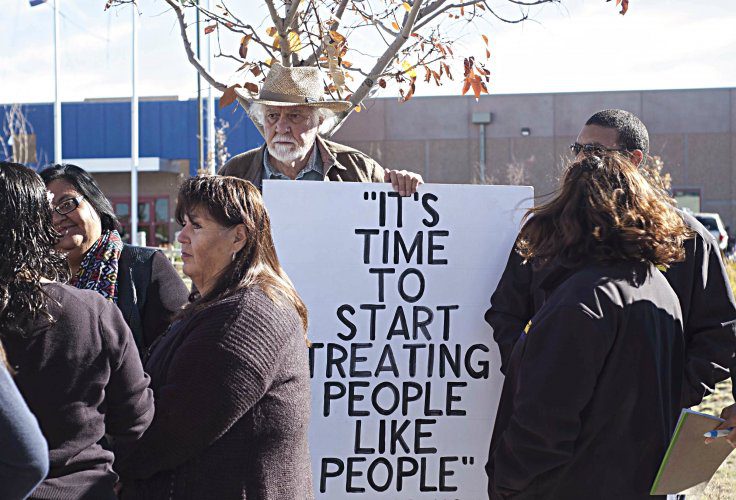Forced Labor in U.S. Detention Centers

A private company in the United States is facing a lawsuit claiming it engaged in forced labor with immigrant detainees. Earlier this month a federal judge ruled that a private detention center in Colorado must face a potential class action suit alleging it violated the Trafficking Victims Protection Act by forcing immigrant detainees to work for little or no pay. The company that runs the detention center, The GEO Group Inc, had asked the judge to dismiss the claims, but the judge denied their motion.
The lawsuit focuses on the company’s “voluntary work program” in which detainees did various tasks around the center for $1 per day. The plaintiffs claim that they were required to perform tasks like scrub bathrooms, wax floors, and maintain the center’s landscaping. Several detainees were also selected each day to clean cells containing roughly 60 migrants (called “pods”) for no pay. They claim they were coerced into doing the work with threats of solitary confinement.
The exploitation of prison labor is not a new phenomenon in the United States. The Thirteenth Amendment to the Constitution specifically permits involuntary servitude “as a punishment for crime.” In fact, all physically able inmates who are not security risks are required to work. And those in custody for the purposes of punishment are subject to working conditions and compensation that are exempt to certain protective wage and labor laws. This has open the door for a variety of industries to take advantage of cheap prison labor, from call centers, to toy manufacturing, to tilapia farming, to energy efficient lighting. The estimated industrial output of prisons and jails in the United States is at least $2 billion annually.
U.S. prison labor also enables companies to gain some social license to operate. Rather than export production to sweatshops in Bangladesh, companies can use U.S. prison labor at similar pricing, but still have the “Made in the U.S.A.” label.
Without the normal labor protections prisoners are more vulnerable to wage theft, poor working conditions, forced over time, and any number of other abuses, including, in at least one case, extended prison sentences in order to maintain the prison’s workforce. However faced with the alternative of time in their cells, prisoners are willing to endure poor working conditions to ensure their ability to continue participating in the work program.
Yet while prison labor itself is problematic, the exploitation of immigrant detainees is even more concerning. Unlike prisoners, immigrant detainees have, for the most part, not yet been convicted of any wrongdoing. Most immigration violations are civil, not criminal violations. And exemptions for prison labor apply exclusively to those in custody for criminal charges, not those in custody for civil infractions. Thus even if immigrant detainees are found to be in violation of federal immigration law, they are still not convicted criminals and are entitled to many of the labor rights that convicted inmates do not enjoy. In addition, many immigrant detainees are asylum seekers, waiting to have their applications heard.
The case against The GEO Group Inc. will thus hopefully answer important questions about the distinguishing features between immigrant detainees and prison populations, but also about the gray line the government walks when putting imprisoned populations to work.
(Photo Credit: Colorado Public Radio)
